A long time favourite theme in European folklore and fiction these orphaned children find themselves without any parental guidance and are therefore able to carve their own paths to be the hero or the heroine of any tale. Within this freedom, the author can explore themes of abandonment, class divisions, society and identity.
The tales of orphaned and abandoned children mark the cornerstone of 19th century literature forming a wide range of lovable young characters that range from Charles Dickens‘s depictions orphaned children left to survive in Victorian society to the fantastical and ethereal fairy tales of Rapunzel and Snow White.
The 19th century also saw a Golden Age in the practice of illustration; improvements in printing technology freed illustrators to experiment with colour and rendering new techniques. Many publications and subsequent editions of novels and series were and continue to be accompanied with bright, evocative illustrations that allow the story to take on new dimensions, bringing to life some of literature’s best loved characters.
1) Oliver Twist
When Charles Dickens began writing Oliver Twist for serialisation in a magazine in 1837, each episode was accompanied by a black and white plate provided by the illustrator George Cruikshank. ‘Oliver Asking for More’ and ‘Fagin in the Condemned Cell’ are said to be among the finest work Cruikshank ever produced and have become as iconic as the books themselves. They were later reproduced in full colour.
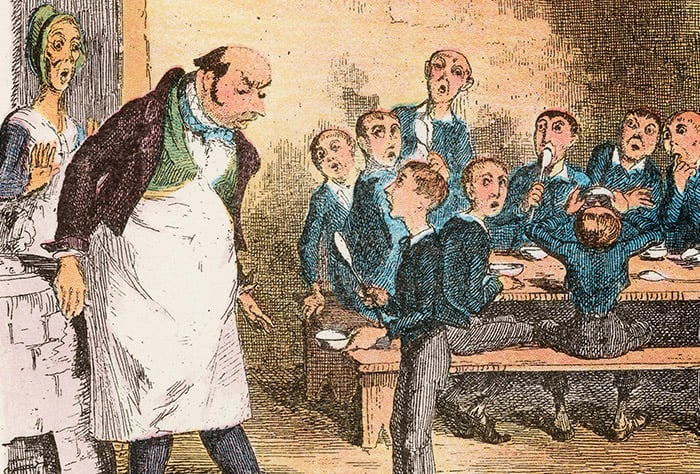
2) Heidi
The young Heidi, sent to live with her Grandfather in the Alps after the deaths of her parents is one of the best loved works in Swiss literature. As an orphan in the secluded alpine village free from the constraints of bourgeois society Heidi lives a carefree and happy childhood. Her intelligence, cheer and simple friendliness has long won over readers.
The book was first published in 1881 by Johanna Sypri and was later illustrated in 1922 by Jessie Willcox Smith, one of the most prominent American female illustrators during the Golden Age of illustration from 1880 until 1918. Her bright and lively illustrations aptly evoke Heidi’s determined resilience and good nature.
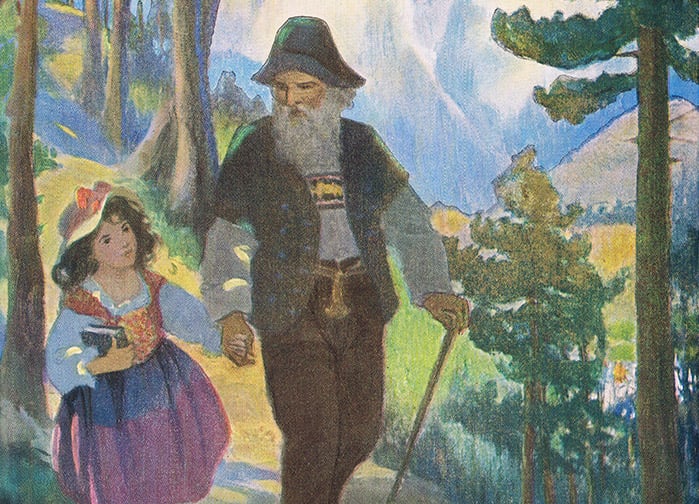
3) Cosette
Impoverished and alone after the death of her devoted mother, Fantine, Cosette’s character in Victor Hugo‘s 1862 novel ‘Les Miserables’ is one of literature’s greatest orphan heroines. The now famous illustration by Emile Antoine Bernard represents not only the young Cosette but also is emblematic for all destitute and vulnerable children while society looks on.
The image of the girl’s anguished face continues to ring true as illustrated by the graffiti artist Banksy who recreates the illustration in spray paint on the French Embassy in London in reference to the use of tear gas at a refugee camp in Calais whilst attempting to evict around 1500 refugees.
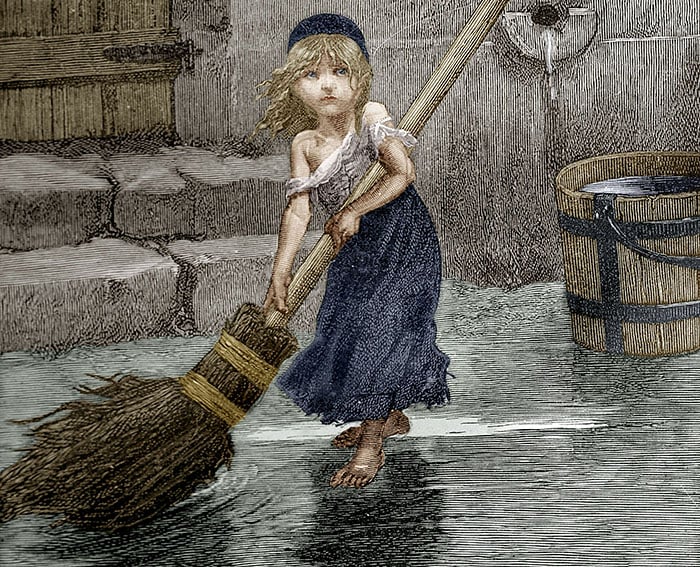
4) Peter Pan
A mischievous boy who can fly and never grows up, Peter Pan was created by the Scottish novelist and playwright J.M Barrie and first appeared in the 1902 adult novel ‘The Little White Bird’. Barrie later returned to Peter as the main character for a play entitled ‘Peter Pan’ or ‘The Boy Who Wouldn’t Grow Up’ in 1904 which was a hugely popular and ran until 1913.
Following the success of the play, Barrie’s publishers, Hodder and Stoughton took chapters 13 to 18 of ‘The Little White Bird’ and republished them in 1906 under the title ‘Peter Pan in Kensington’ with illustrations by Arthur Rackham. Peter’s nonchalant and cocky attitude appears to personify the selfishness of childhood especially in his refusal to grow up, he is nonetheless greatly loved as the abandoned and impish orphan who defies pre-existing norms and realities.
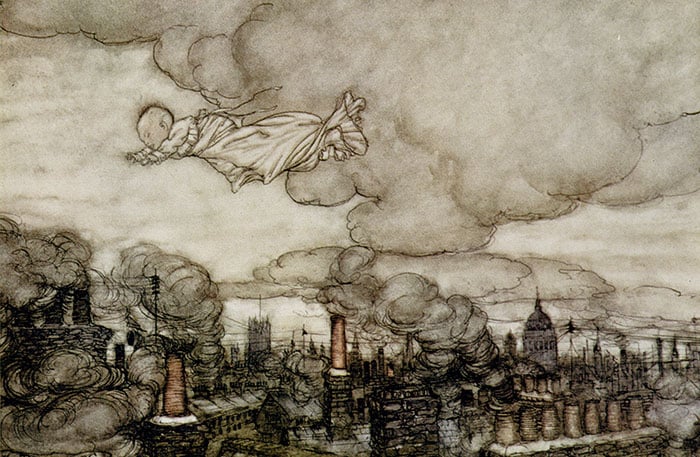
5) Rapunzel
Rapunzel is a character whose parents are forced to give her up as an infant to the evil witch Dame Gothel, she is then sent to live in a tower with no stairs or door where the only way to enter is to climb up her long golden hair. The story was first published in 1812 as part of ‘Childrens and Household Tales’, a collection of German fairy tales by the Brothers Grimm. The tale has inspired many different illustrations in subsequent publications for example, Anne Anderson’s dreamy and ethereal Art Nouveau rendition of the witch climbing Rapunzel’s hair.
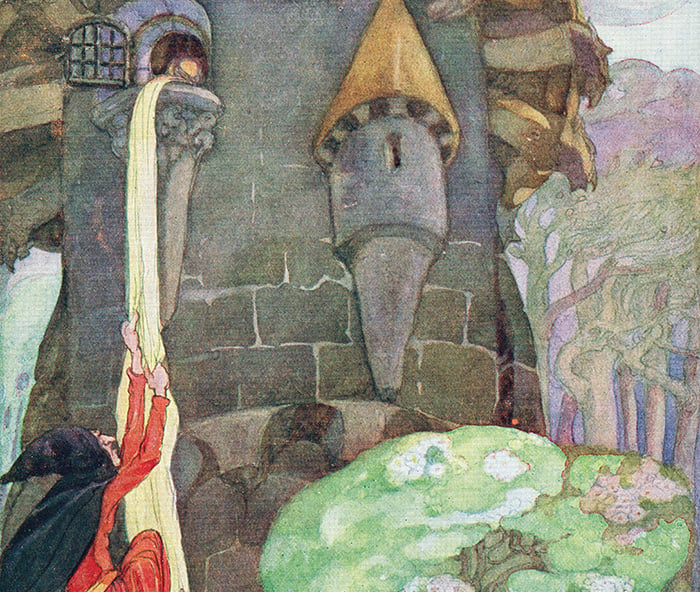
6) Snow White
Another fairy tale in the 1812 Brothers Grimm collection is ‘Snow White’, the tale of a young girl whose mother dies in childbirth and is left with an evil stepmother before being taken in by the Seven Dwarfs. Numerous illustrations have been created to depict the story of ‘Snow White’ by key illustrators of the late 19th and 20th century such as Arthur Rackham, Anne Anderson and Charles Folkard all of which convey the dream like, enchanting qualities of the fairy-tale.
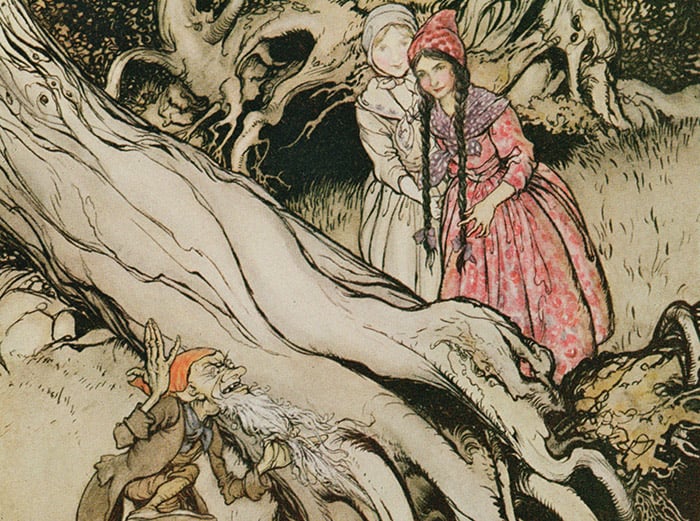
7) Mowgli
A feral child from the Pench area in Central India, Rudyard Kipling‘s Mowgli first appeared in the short story ‘In Rukh’ and then became the main protagonist in his ‘The Jungle Book’ series. Lost by his parents as a baby in the Indian jungle during a tiger attack, Mowgli is then adopted by his Wolf Mother, Raksha and Father, developing extraordinary skills in hunting and tracking with the help of his wolf brothers.
The stories were first published in magazines in 1893-4 and the original publications contain illustrations, some of which were created by Rudyard’s father, John Lockwood Kipling. The beloved story of Mowgli was consequently illustrated several times, most notably in Jessie Willcox Smith’s lithograph which was the cover illustration for ‘Good Housekeeping’ in October, 1923.
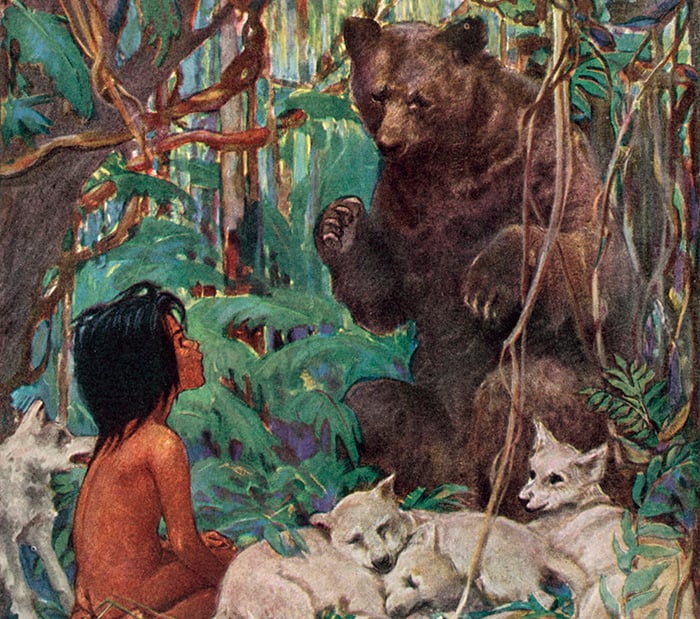
8) Jane Eyre
‘Jane Eyre’ traces the life of a young girl initially sent to live with the family of her maternal uncle after her parents death. She later becomes a governess where she meets the fateful Mr Rochester. As a governess she embodies the orphaned child as she has no class identity and is neither a servant nor a member of the family.
Jane Eyre is one of the greatest known heroines of Victorian literature thanks to her determination, moral values and passion. Charlotte Bronte originally published the novel under the pseudonym ‘Currer Bell’ in 1847. The second edition was illustrated by Frederick Henry Townsend and many other images later appeared depicting the young heroine including the collection of colourful lithographs by Charles Edmund Brock in 1921.
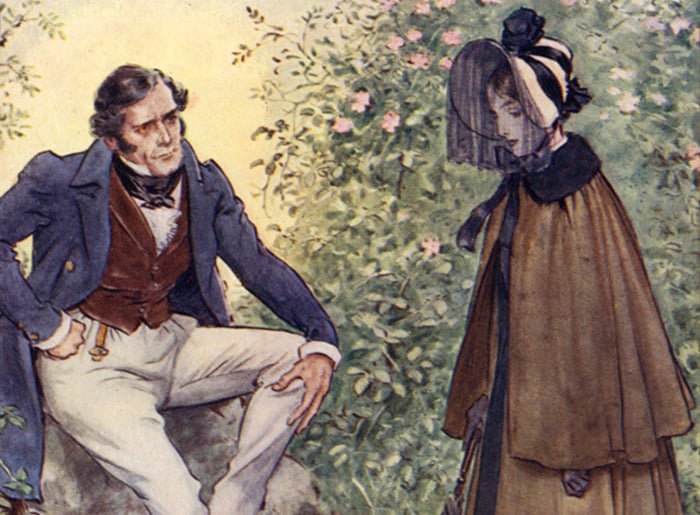
9) Huckleberry Finn
‘The Adventures of Huckleberry Finn’ was first published by Mark Twain in 1884. After the death of his mother and abandonment of his alcoholic father Huck is placed under the care of the Widow Douglas and her sister Miss Watson who attempt to ‘civilise’ him.
Finding this situation oppressive Huck and his friend Tom Sawyer escape to live among robbers and thieves. The original illustrations and frontispiece were engraved by E.W Kemble who was working as an artist for ‘Life’ magazine. As a great admirer of his work, Twain chose Kemble to illustrate the story of his young protagonist.
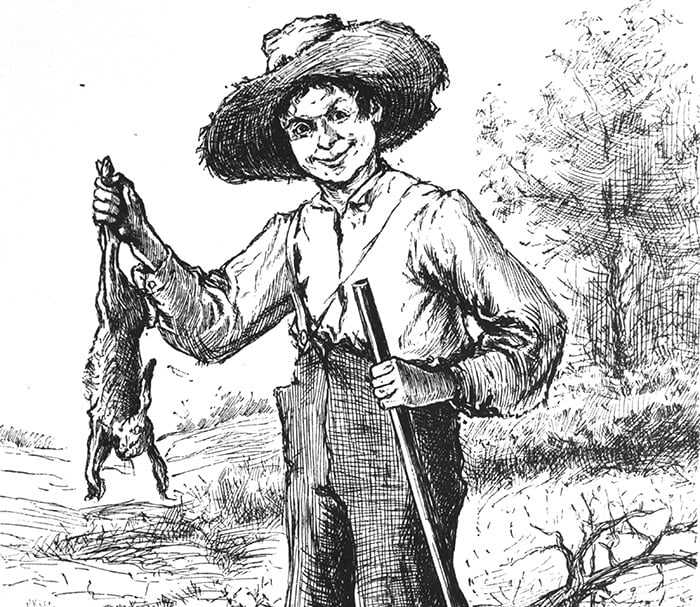
10) Pip
‘Great Expectations’ tells the tale of the orphaned Pip from a young boy to adulthood and explores the contrasts between wealth and poverty as well as the triumph of good over evil. The novel was first published as a serial in the weekly periodical ‘All the Year Round’ from 1860 to 1861.
The original serialisation and subsequent 1861 first edition of the novel were issued without illustrations; the first and only time that Dickens did not collaborate with an illustrator. Engravings and lithographs soon appeared in subsequent editions, such as this illustration by Henry Furniss from The Testimonial Edition of ‘Great Expectations’ published in 1910.
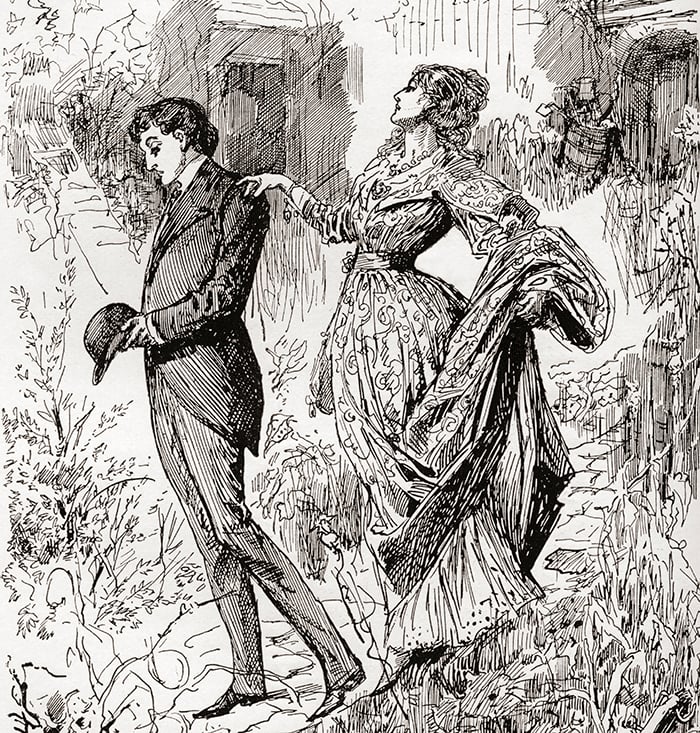

 Item added to cart
Item added to cart


